Board Games at the Gates!
I don't go into this much. I think one of the main reasons is that for a long time, it was a subject that was too weird even for weird people to get into. So I focused on posts about writing and book reviews. Well, I'm bringing some boxes out of the closet, so to speak. And they're good ones. **This is a beginner's guide. If you're looking for something deeper, leave a comment, and I can go into more detail.**
Gateway Games
Gateway games are a fun topic. Pretty much everyone has heard of and played a zillion games of Monopoly, Candyland, Chutes and Ladders and a thousand others when they were a kid, and are probably burned out (*psst* most people play Monopoly incorrectly, anyway). Here are a few gateway games, their basic mechanics, why they're awesome, where you can get them, their ranking on boardgamegeek.com (THE database for all things boardgaming), and any other fun stuff.
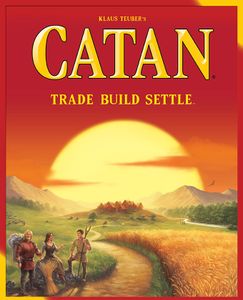 Catan
Catan
Mechanics: Set Collecting and trading. Lots of interaction between players. Came out in 1995, and is still one of the most well-regarded games out there. Rated 7.19/10.
Catan was actually my gateway, so it has a special place in my heart. The goal is to get ten points. You do that by building and expanding settlements, having the longest road, having the largest army, and buying developments for your cities. On the surface, watching people trade bricks and sheep doesn't seem appealing or fun, the game really sucks you in. You get to the point where you're thinking "I need this to build another settlement, and Matt has all the brick! He's not trading anything, even though I know he needs my wheat! Aargh!" It's hard to explain, but the whole weird "can I get anyone's wood?" question becomes a lot more interesting when you're trying to keep someone from getting ten points and winning.
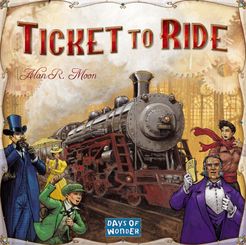 Ticket to Ride
Ticket to Ride
Mechanics: Set Collecting, route building, hand management. Still lots of interaction between players. Still fairly light on the brain. Came out in 2004, rated 7.44/10. Also one of the most popular games out there, even among people deeper in the gaming hobby because there are a lot of expansions and different maps.
The goal is to get the highest score. You do this by completing tickets you pick at the beginning of the game and throughout. Each turn, you have the option of choosing cards from the face-up ones or the stack, or you can complete a route on the board. Each route gets you some points, but completing a ticket will get you a bonus. Routes are different colors (and there are symbols matched to the colors for those with colorblindness), so choosing the cards you have in your hand is important.
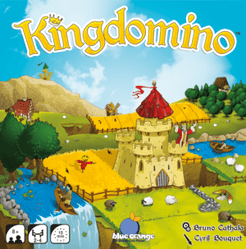 Kingdomino
Kingdomino
Mechanics: Tile drafting, tile placement, pattern building, spatial. Not as much interaction between players, but what it lacks there, it makes up for in other areas. It's a fantastic game for everyone, kids and adults alike, despite the cartooney art. It's rated 7.38/10, and came out in 2016. It's won a ton of awards.8
The goal: Get the most points. The method: efficiently place your domino-like tiles together so as many matching features touch, and have the most crowns on them. This is kind of a puzzley game, which makes it great for kids who like that kind of thing, but it also plays quickly. It takes a lot of forethought and spatial reasoning, and it's just a damn fun game to play. The age is marked at 8+, so there's usually not a problem with most kids playing if they're even a little younger if they've got good spatial reasoning skills.
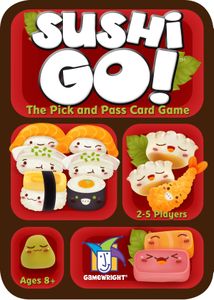 Sushi Go!
Sushi Go!
Mechanics: Card drafting, set collection. Very little interaction while you're choosing cards, but when you see what other people have chosen, you might have a slight eye twitch. It's rated 7.07/10, and came out in 2013.
The goal: Get the most points. How: Card drafting is really popular right now, and I don't see it going away anytime soon. It's really effective, quick, and easy. Each player gets a certain number of cards, plays one, and passes the rest to the left. They play one from their new hand, either trying to set up a combo with the card(s) they've already played to earn extra points, or to play something that'll (hopefully) set something else up. For example: I play a tempura. I need two in a round to get five points. Next turn, I put out wasabi. That makes my next nigiri worth triple. I still don't have any points. Crap! Next hand. Squid nigiri! I play that, and my wasabi makes that worth nine points. Whew. So on, so on. After three rounds, the game ends.
The goal: Get the most points. How: Card drafting is really popular right now, and I don't see it going away anytime soon. It's really effective, quick, and easy. Each player gets a certain number of cards, plays one, and passes the rest to the left. They play one from their new hand, either trying to set up a combo with the card(s) they've already played to earn extra points, or to play something that'll (hopefully) set something else up. For example: I play a tempura. I need two in a round to get five points. Next turn, I put out wasabi. That makes my next nigiri worth triple. I still don't have any points. Crap! Next hand. Squid nigiri! I play that, and my wasabi makes that worth nine points. Whew. So on, so on. After three rounds, the game ends.
Pandemic
Mechanics: Cooperative, set collection, card management. Player interaction is crucial. Rated 7.63/10, came out in 2008.
The goal: WORK TOGETHER TO SURVIVE! How: Discover the cure to four diseases by collecting cards of the correct color and getting to research stations across the globe. Meanwhile, those diseases are spreading. Fast. If one disease hits four cubes in a city, an outbreak occurs, and it spreads to connected cities, getting you closer to one of the loss conditions. As you draw cards, you'll come across one of the few Epidemic cards you seed into the deck that escalates the tension and makes everything that much more urgent. But to help with everything, each player is given a role with a special ability at the beginning of the game. One can remove all disease cubes from a city, while another can move other players' pawns. One is better at research, while another is better with logistics. You have to communicate well with others and cooperate if you want to do well. This makes it ideal if you're not too competitive, or great for dates if you're not sure if your date is. You work together for a common goal. What's better than that?
So now that I've geeked out a little, I'm going to get back to work.
Thanks for wreading!
Jeff
The goal: WORK TOGETHER TO SURVIVE! How: Discover the cure to four diseases by collecting cards of the correct color and getting to research stations across the globe. Meanwhile, those diseases are spreading. Fast. If one disease hits four cubes in a city, an outbreak occurs, and it spreads to connected cities, getting you closer to one of the loss conditions. As you draw cards, you'll come across one of the few Epidemic cards you seed into the deck that escalates the tension and makes everything that much more urgent. But to help with everything, each player is given a role with a special ability at the beginning of the game. One can remove all disease cubes from a city, while another can move other players' pawns. One is better at research, while another is better with logistics. You have to communicate well with others and cooperate if you want to do well. This makes it ideal if you're not too competitive, or great for dates if you're not sure if your date is. You work together for a common goal. What's better than that?
So now that I've geeked out a little, I'm going to get back to work.
Thanks for wreading!
Jeff
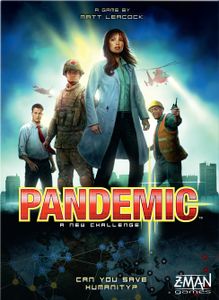
Comments
Post a Comment